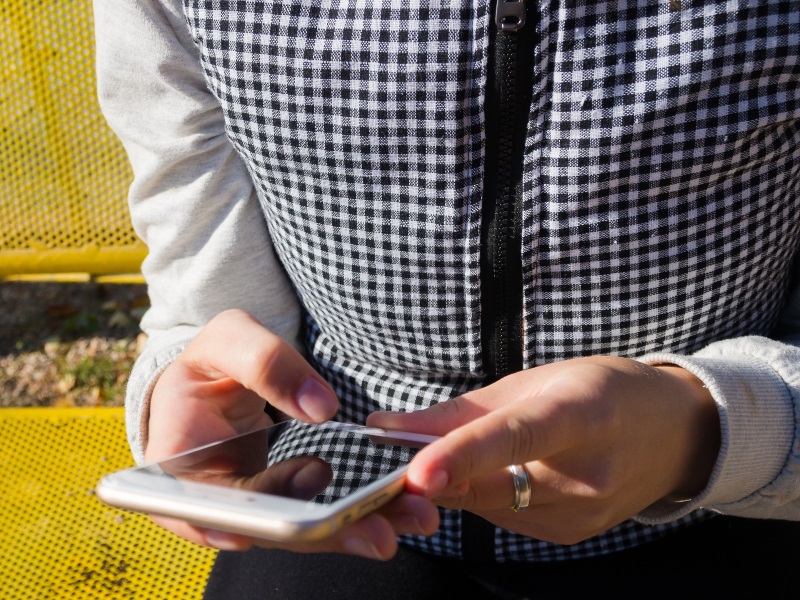- Home
- Science
- Science News
- Nanowall 3D Technology to Improve Touchscreen Experience: Study
Nanowall 3D Technology to Improve Touchscreen Experience: Study

A research team led by Dimos Poulikakos, professor of thermodynamics at ETH University in Zurich, Switzerland, created a transparent electrode that takes the form of a grid made of gold or silver "nanowalls" on a glass surface.
The walls or electrodes, hardly be seen with the naked eye, have a higher conductivity and are more transparent than those made of indium tin oxide the standard material used in smartphones and tablets today - giving a better the screen quality and precision to the touchscreen.
"Indium tin oxide is used because the material has a relatively high degree of transparency and the production of thin layers has been well researched, but it is only moderately conductive," said Patrik Rohner, a PhD student in Poulikakos' team.
In order to produce more conductive electrodes, the team opted for gold and silver, which conduct electricity much better.
Since these metals are not transparent, the scientists had to make use of the third dimension.
"If you want to achieve both high conductivity and transparency in wires made from these metals, you have a conflict of objectives. As the cross-sectional area of gold and silver wires grows, the conductivity increases, but the grid's transparency decreases," Poulikakos said.
To make the plan work, the team used metal walls only 80 to 500 nanometres thick. Since the walls are two to four times taller than they are wide, the cross-sectional area, and thus the conductivity, was found sufficiently high.
The researchers used printing process known as Nanodrip to produce these tiny metal walls.
Nanodrip, that Poulikakos and his colleagues developed three years ago, is a process in which they used inks made from metal nanoparticles in a solvent.
An electrical field draws ultra-small droplets of the metallic ink out of a glass capillary. The solvent evaporates quickly, allowing a three-dimensional structure to be built up drop by drop.
The paper was published in the journal International Business Times.
Get your daily dose of tech news, reviews, and insights, in under 80 characters on Gadgets 360 Turbo. Connect with fellow tech lovers on our Forum. Follow us on X, Facebook, WhatsApp, Threads and Google News for instant updates. Catch all the action on our YouTube channel.
Related Stories
- Samsung Galaxy Unpacked 2025
- ChatGPT
- Redmi Note 14 Pro+
- iPhone 16
- Apple Vision Pro
- Oneplus 12
- OnePlus Nord CE 3 Lite 5G
- iPhone 13
- Xiaomi 14 Pro
- Oppo Find N3
- Tecno Spark Go (2023)
- Realme V30
- Best Phones Under 25000
- Samsung Galaxy S24 Series
- Cryptocurrency
- iQoo 12
- Samsung Galaxy S24 Ultra
- Giottus
- Samsung Galaxy Z Flip 5
- Apple 'Scary Fast'
- Housefull 5
- GoPro Hero 12 Black Review
- Invincible Season 2
- JioGlass
- HD Ready TV
- Laptop Under 50000
- Smartwatch Under 10000
- Latest Mobile Phones
- Compare Phones
- Redmi Note 15 5G
- Redmi Note 15 Pro 5G
- Redmi Note 15 Pro+ 5G
- Lava Play Max
- Poco C85 5G
- Honor Magic 8 Lite
- Jolla Phone
- Realme P4x 5G
- Asus ProArt P16
- MacBook Pro 14-inch (M5, 2025)
- OnePlus Pad Go 2
- Poco Pad M1
- Just Corseca Skywatch Pro
- Honor Watch X5
- Acerpure Nitro Z Series 100-inch QLED TV
- Samsung 43 Inch LED Ultra HD (4K) Smart TV (UA43UE81AFULXL)
- Asus ROG Ally
- Nintendo Switch Lite
- Haier 1.6 Ton 5 Star Inverter Split AC (HSU19G-MZAID5BN-INV)
- Haier 1.6 Ton 5 Star Inverter Split AC (HSU19G-MZAIM5BN-INV)

















